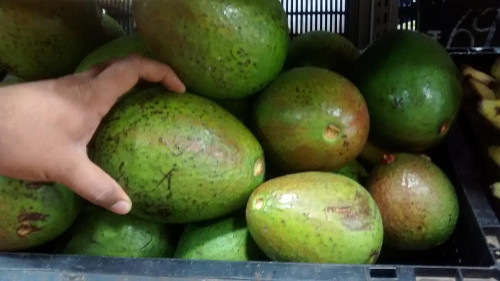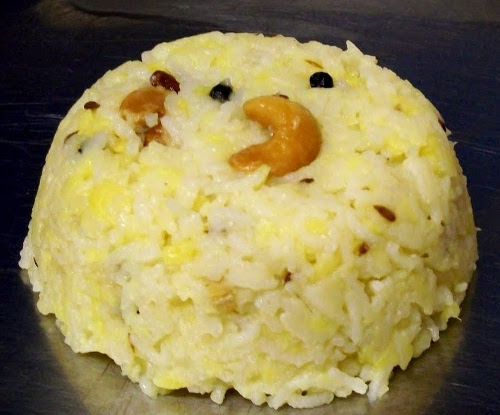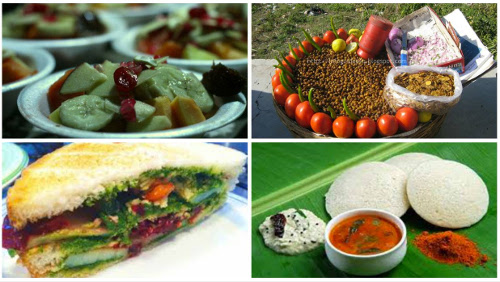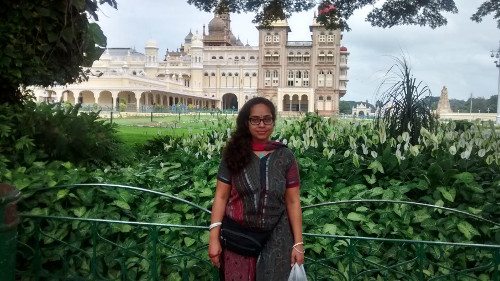I am always being asked about how to stay plant-based while traveling.
It can definitely be done, and plant-based options are becoming easier to find. I have an entire section on travel in the Happy Herbivore Guide to Plant-Based Living.
I've also written a post about traveling across Asia.
When Meal Mentor member Siri told me about her recent trip to India I asked if she would share her experience as a blog post. (Siri is also my co-pilot in Today's episode of the Meal Mentor Co-Pilot Podcast. Listen Here.)
I'll let Siri take it away!

First off, I want to share that I was born and brought up in the southern part of India. My parents and extended family members live there. I have been vegetarian since birth. I turned to a WFPB lifestyle just 2 years ago with a Meal Mentor subscription in 2014.
I have been (and still am a little bit) overweight and started my fat loss journey in 2010. Making changes to diet has been the most important in my lifestyle and made all the difference.
Going out, being social, and planning trips are some things we cannot avoid. I had to find a way to make it work. Earlier, I was clueless and I have to admit - did not want it badly enough to "make it work." I found excuses and used food as a reward. I used to have a mentality of "I am on vacay, who cares? - let me treat myself to ice cream and more food!"
I traveled back home to India three times since I made changes to my diet. Every time, I gave in to treats. But, I quickly realized my weakness is food. I have to learn to control sooner or later. Otherwise, it just proves to me that I am not serious, and my goal without a game plan & action will just remain a goal.
I was determined that my next trip would be different. I decided that this time, I was going to just be willing to recognize and accept the result of my choices.
One month before I planned my trip, I got myself to practice and simulate conditions I may face during my vacation and try to handle it. Lindsay's meal plans already help learn to create balanced meals and to get creative. So mentally, I knew to include veggies, chickpeas, and use whatever spices I could get ahold of. Some things that I was already aware of were:
1. The places where I was going to travel (In this case - cities in India)
2. Kind of people who would surround me.
3. Kind of places I would visit to eat or drink.
4. Where I could purchase ingredients for WFPB meals.
5. My mother would make my meals without oil / dairy and pack my meals for outdoors.
Knowing these, helped me create a game plan. I planned in advance 'where' I would eat 'what'.
One thing I would highlight is, India is probably the most vegetarian friendly country and if planned well, it will be a cake walk. Sure, most Indians consume dairy, some do not eat root vegetables (Jain food). But, most foods can be prepared without oil or butter or dairy. It is natural to find good and filling vegan food - very easily, virtually everywhere in India.
The only difficulty will be to request for no oil or dairy!
I want to jump right in and share what I did and give some tips. It is important to know that I only visited South India. North India will be more or less similar, overall.
Some must-have experiences in food, that are not found outside of India:
1. Eat a meal in a banana leaf.
2. Indians use curry leaf as a garnish. Not a single recipe goes by without addition of this medicinal plant. This plant is native to India.
3. Try Asafoetida spice. Again, we use this medicinal herb in most dishes. It is bitter, but bitterness disappears during cooking. It has a faint scent too!
4. Definitely try street food with vendors who sell Chickpeas & other beans as snacks. (More on that below.)
5. Avocado is called " Butterfruit". They are huge in size. They make a smoothie out of these. If your calories permit, do-not-miss.

6. Gulkhand: This is a jelly made with pink rose petals. Very unique jam from India. You can order it online in Amazon.
7. Try Indian vegetables and be pleasantly surprised by how differently they taste. For example - tomatoes are sour, not sweet, colors and sizes vary. Try gourds that grow in India like Ridge gourd, snake gourd, and bitter gourd.
8. Neem tree leaves. Not found outside of India. Bitter in taste - but very, very good.
9. Tamarind. Native to south Asian countries. Indians use this to super sour up their meals.
10. Last, but not the least - Betel leaves. This is usually had as a mouth freshener. Side note: Paan or stuffed Betel leaves with sweet sauces & spicy fillings is a roll up, to be eaten after dinner. But do be careful when you order one and carefully see what has been stuffed inside. Warning: extra strong spices can cause stomach upset and you may faint.

Breakfasts
Easily, the most vegan friendly and fresh meal you will get in abundance within minutes. Typical south Indian breakfasts is made up of rice and lentils with vegetables.
Some of my favorite meals that I had are:
Idli (steamed rice cake) with Sambar (lentil soup with veggies) and Coconut chutney. Ask for no butter (Ghee).
Masala Dosa (A rice based crepe stuffed with mild spicy mashed potato. Ask for no butter)

and Ven Pongal (rice and lentils steamed with peppercorns)

For lunches and dinner - so many choices!
Indian Roti (tortilla made with whole wheat flour) is quite popular. usually eaten with vegetable curry and dal (lentils), rice with vegetable curry, chutneys, dry powders made of roasted seeds & chillies and soups!
Some meals are stand alone - made with vegetables and rice together with spices as a 1-pot meal. This is called Pulao or Biryani or Bath. (Make sure to ask to be made without oil and ghee that are added before serving)

These are the foods I actually ate and took pictures of. Cups of cut fruits, roasted and unroasted varieties of beans and chickpeas (usually sold mixed with potato, onions, spices, and lemon juice).
Special shout out to sandwiches (ask with no butter; usually have no cheese, but ask for no cheese, just in case). These are very easy to access, especially near fruit vendors and juice shops. Also available in restaurants everywhere. They toast bread, and layer with boiled potato, beets, cucumber and optionally carrots, bell peppers. They apply mint paste on one side of the bread, tamarind paste on the other side. Sprinkled with Chaat Masala. It is lip-smackingly good. You can eat on the spot of take it for to-go.
Cheap food and snacks!
One thing that might surprise you in India is how easy and cheap it is to eat fruits directly cut fresh for like 20 cents! On certain days, I literally lived on the tasty bowls and bowls of fruits and chickpea snacks from street vendors. I do not think I ate that many fruits ever! Not just because it is cheap, there was nothing else the vendor could add except a few spices and garnishes. I was totally hooked!
Apart from authentic Indian foods, you will find McDonalds, Subways, Papa Johns pizza, Pizza hut, Dominos, Starbucks, Hard Rock Cafe and other American fast food restaurants. I do not want to recommend them. But, I want to highlight that they all have wide vegetarian options (and some Indianized versions for burgers, pizzas, etc.) for those who do not eat meat. Some of them also have a vegetarian station on a different side too - they physically separate the utensils and serving area.
The following have been in India since last 20 years, but worth mentioning :
1. Soy milk is available in all supermarkets / grocery stores. Both plain and a chocolate version.
2. Nut butters, cut veggies, and spices are easy to access for cheap.
3. No vegan ice creams or desserts. Very hard to find them. It is easier to eat fruits instead. Try new fruits like coconut meat, fruits of sugar palm (you find this only in South Asia countries) or cookies (called as biscuits in India)!
Definitely buy water bottles which are sealed.
Almost all Indian meals are centered around vegetables. There will be a lot of food to sample and eat that is fresh and vegan. It is easy to commute (Thanks to Uber, Ola apps) and use apps like Zomato to find good places to eat. But, most vegan, oil free food will be right around a corner, waiting for you!
When you visit India, check out out so many foods that are more than curries and samosas. Strangely, most US restaurants get foreign Authentic food somewhat wrong. Indian food is not spicy with red gravies. Chinese food is likely not as oily and sweet. There is no such a thing as a Burrito in Mexico. There is no Pad Thai in Thailand.

(Behind me is the famous Mysore Palace of a Maharaja. This is the second most visited tourist attraction after the Taj Mahal in India.)
I would like to take this opportunity to appreciate my mother and mother-in-law, who played important roles in this trip. Every time I visit India, my mom (she was a teacher and now a meditation teacher) always arranges for a yoga teacher to teach me new poses and makes all meals according to my choices. My mother-in-law always cooks homemade food for me when I visit her and arranges field trips to agricultural lands (she was a teacher too and now an agriculturist teaching new farming practices). Overall, my family helped a lot to help me avoid outside food as much as possible.
I highly recommend you to visit India and an advance Welcome to you all!
Thank you so much Siri for sharing your plant-based traveling experience with us!
Don't miss our next blog post about our Herbie of the Week. To get notified when we post it join our email list.














